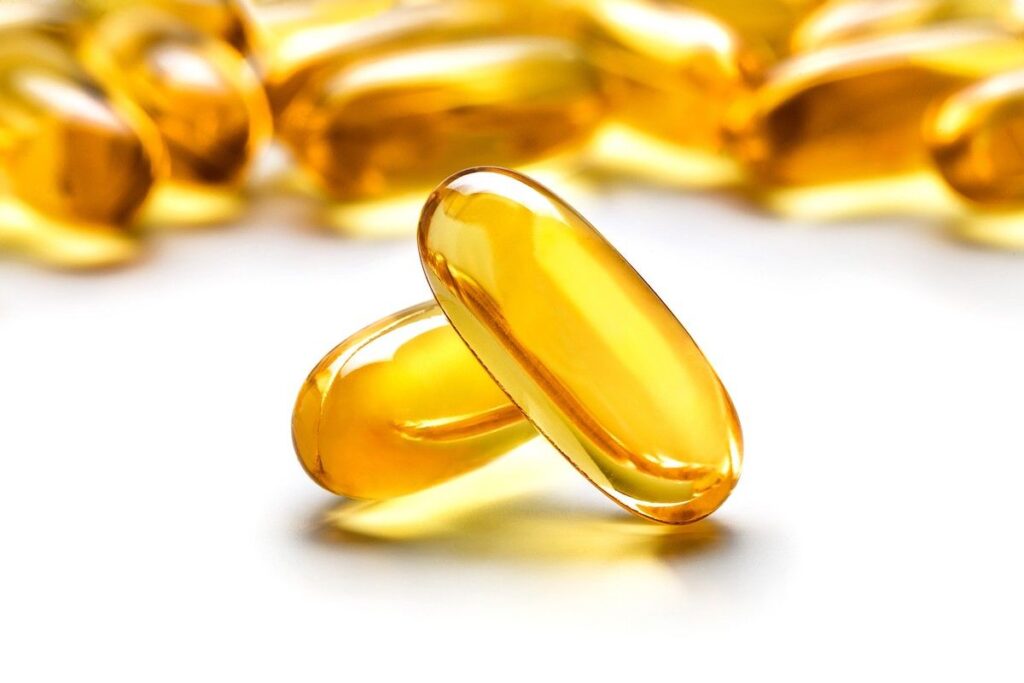A whopping 94.3% of people in the US do not meet the daily requirement for vitamin D, one of the most vital micronutrients needed for health and wellness. “Vitamin D, like all vitamins, is a nutrient that’s essential for life,” endocrinologist John Bilezikian, MD, tells Columbia University Irving Medical Center. “Our bodies produce active vitamin D after exposure to sunlight, and we get some vitamin D from food. Vitamin D is also a hormone. Hormones help control how cells and organs function. However, we do not call vitamin D ‘hormone D’ because without it we cannot live. Latin lesson: vita means life.” Here’s what you need to know about vitamin D deficiency, and what to do about it.
RELATED: Do You Actually Need a Vitamin D Supplement After Summer?
Why Is Vitamin D Important?
RomarioIen / Shutterstock
Vitamin D is crucial for bone health. “Vitamin D’s best-known role is to keep bones healthy by increasing the intestinal absorption of calcium,” says Harvard Health. “Without enough vitamin D, the body can only absorb 10% to 15% of dietary calcium, but 30% to 40% absorption is the rule when vitamin reserves are normal. A lack of vitamin D in children causes rickets; in adults, it causes osteomalacia. Both bone diseases are now rare in the United States, but another is on the rise — osteoporosis, the ‘thin bone’ disease that leads to fractures and spinal deformities.”
Signs of Vitamin D Deficiency

For many people, vitamin D deficiency may not be obvious. According to Yale Medicine, the most common signs include muscle pain, bone pain, increased sensitivity to pain, a tingly “pins-and-needles” sensation in the hands or feet, and muscle weakness in body parts near the trunk, such as the upper arms or thighs. People may also experience a waddling gait due to muscle weakness in the hips or legs, a history of broken bones, muscle twitches or tremors, muscle spasms, and, in severe cases, bowed legs.
Foods With Vitamin D

Unfortunately, very few foods contain vitamin D unless the product has been fortified. “Orange juice, milk, yogurt, and cereal are often fortified with vitamin D,” Dr. Bilezikian says. “Check labels. To minimize processing, many organic products are not fortified. Vitamin D is naturally present in fish, especially fatty, oily fish like salmon. Choose wild over farmed when you can: A study showed farmed salmon had about 25% of the vitamin D content as wild salmon. You can also get vitamin D from fish liver oils. It’s best to get nutrients through natural sources, but vitamin D is vitamin D: Get it however you can.”
Vitamin D and Sunlight

Exposure to sunlight is crucial for vitamin D production. “The major source of our body’s vitamin D comes from our own production in the skin,” Robert D. Ashley, MD, tells UCLA Health. “This requires the ultraviolet rays from sunlight to form vitamin D3; both the liver and the kidneys are needed to then create the active form of vitamin D. Those with inadequate sun exposure — including disabled people, infants, the elderly, dark-skinned people, and those who live at northern latitudes during the winter — are at risk of low vitamin D3 production, which can lead to a loss of bone density and an increased risk of fractures.”
How Much Sunlight Do I Need?

This depends on where you live and how much skin is exposed to the sun. “In the summer in Miami — with 25 percent of the body exposed to the sun — a person would need only 3 minutes of sun exposure to make a sufficient amount of vitamin D,” Dr. Ashley says. “That same person — when placed in Boston in the winter — would need 23 minutes at noon to produce enough vitamin D.”
Staying Safe
Shutterstock
Be sensible about sun exposure by avoiding the sun between 10 a.m and 2 p.m. “There is a balance — a Goldilocks zone — between sufficient sun exposure to make vitamin D3 and the risk of getting skin cancer,” Dr. Ashley says. “Because our fat cells can store vitamin D for months, you don’t need to worry if there are days when you don’t get enough sun exposure. You’ll still be safe from the detrimental bone effects of low vitamin D if you get enough sun other days. So take some time to be outside.”
Vitamin D Supplements
iStock
“Most people require supplements to get the vitamin D they need. It’s the main benefit of a daily multivitamin; most provide 400 IU,” says Harvard Health. “Remember to read the labels carefully so you won’t get too little or too much. And although cod liver oil is rich in vitamin D, it has too much vitamin A for regular use.”
Iron Deficiency
iStock
While vitamin D deficiency is most common across the board, women specifically are more likely to be deficient in iron. “Iron deficiency is common in menstruating and pregnant women, children, and others with a diet history of excessive cow’s milk or low iron-containing foods,” says the American Society of Hematology. “By talking with your doctor about your diet and medical history, your doctor may gain enough information to determine whether additional testing is needed.”




